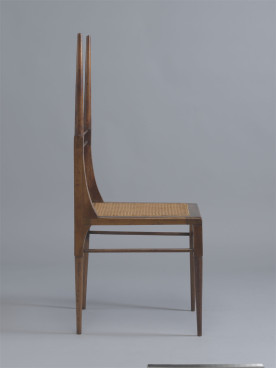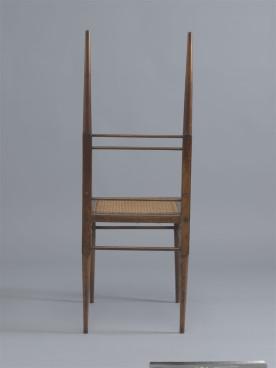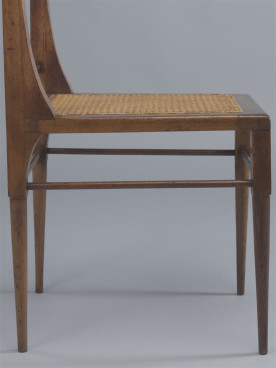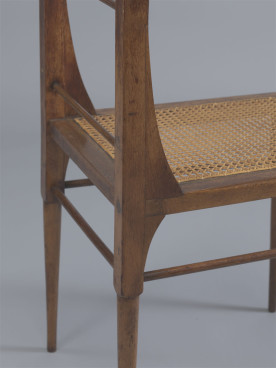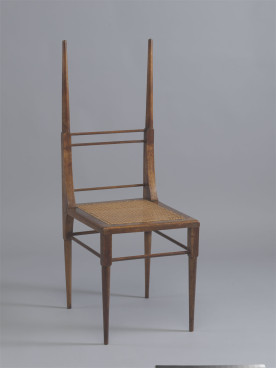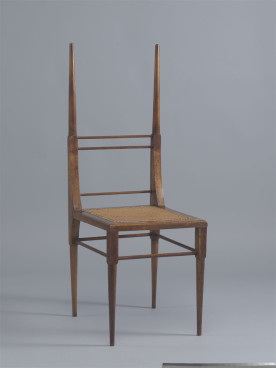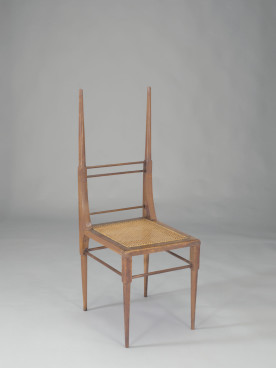Chair, c.1885
Birch and cane
The chair was designed by E.W. Godwin and probably made by William Watt & Co., London. This is one of two versions of Godwin’s Greek Side Chair. The back rail is stamped ‘AW’.
Adam Bowett Catalogue 14/08/2012
Description
A chair, c.1885. The back is formed of two tall tapering posts, joined by a paired cross rail and a single lower rail, over a rectangular cane seat, on square forelegs joined by turned stretchers and tapering to a turned circular point.
Dimensions
H: 39 ¾ ” (101cm) Seat height: 16” (41cm) W: 14 ¼ ” (36cm) D: 16 ¾ “ (42cm)
Designer/Maker
E. W. Godwin, possibly made by William Watt & Co.
Materials
Birch and cane
Dating Criteria
There are several variants of this design known, beginning with furniture designed for Dromore Park, Ireland, in 1869. Commercially produced versions were available in the 1870s and 1880s.
Construction
The back is composed of two posts, square in the mid section, round and tapering to a point at either end. The posts are connected by paired spindles halfway up the back, a single spindle just above the seat and another just below. The front face of the posts has a curved triangular piece planted on and secured with a screw from the back. Below the seat is a similar piece but shorter. Both pieces are let in to the back post to a depth of about 1/8” (3mm) and between them these pieces locate and support the seat. The seat frame is constructed of four rails, the front and side radiussed on the outer upper corners; the back rail is haunched where it meet the rear posts, with the ends of the rail showing though to the sides of the chair. It is fixed to the back posts by screws, screwed through from the back. The side rails are tenoned into the back rail and into the front rail. The legs are either tenoned or dowelled up to the front seat rail and the stretchers are dowelled all around.
Marks or stamps
The inside face of the back rail is stamped “AW”
Condition
Sound. No breaks. The plugged screws in the back posts are conceivably later reinforcements. The varnish is distressed over most of the surface and the timber darkened by oxidization, the cane is modern.
Additional remarks
This appears to be a lesser-known version of Godwin’s ‘Greek’ chair. The construction is notable for its innovative approach, resulting from the challenges presented by the unusual design.
References
Susan Weber Soros, The Secular Furniture of E.W. Godwin, New Haven and London (2000), p. 136, fig. 185.
Provenance
H. Blairman & Sons, 2005.



